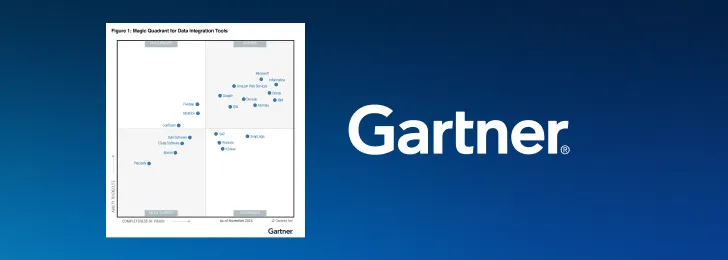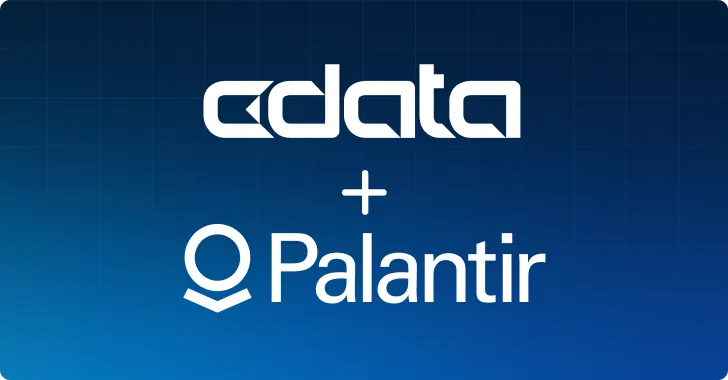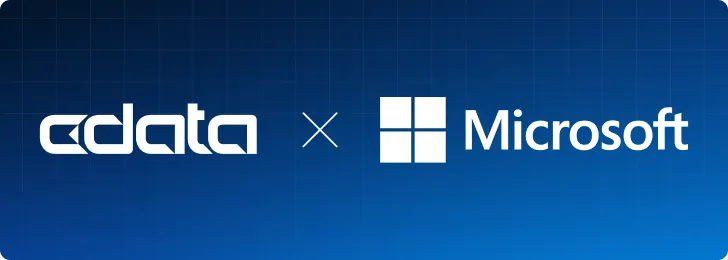
As the world becomes more saturated with data, the need to gain value from it increases. Data in and of itself doesn’t generate revenue; it must be translated into something consumable—information—to gain anything from it. Collecting, storing, curating, and analyzing massive amounts of data must come before any value is realized.
Traditionally, the data is gathered into an organization’s servers—on-premises or in the cloud. A data pipeline is created to process the data in-house, producing the information the business needs to analyze and act on. This can be a costly and time-consuming endeavor for organizations and funnels resources away from investing in their business.
This is where Data as a Service (DaaS) comes in. In this article, we’ll do a deep dive into DaaS, the benefits and challenges, some use cases, and more.
What is Data as a Service?
Like all “as a service” models, DaaS is cloud-based and is a product of the evolution of Software as a Service (SaaS). DaaS is a big data management strategy that employs the cloud to provide data management services, from storage, integration, and processing—up to and including analytics.
DaaS has proven its value as an effective solution to the challenges of managing ever-growing volumes of data. Its prevalence has increased alongside the broader adoption of cloud services, and the number of providers specializing in DaaS is expanding.
DaaS can transform how organizations use their data to create value. It allows them to tap into complex data sources to produce actionable insights without devoting the in-house resources to manage the data pipeline.
5 Data as a Service benefits
It’s no myth: Organizations are overloaded with data. So much so that opportunities are lost because they can’t access the right data, security protocols are hard to get through, or the data becomes outdated before it can be used. DaaS has the potential to eliminate these challenges, allowing organizations to derive real value from their data. A few are listed here:
-
Mitigate risk by minimizing potential challenges: Downtime is a concept that data-driven organizational leaders shudder to think about. For traditional data management, if a server goes down or maintenance needs to be performed, the ability to gather and use data stops in its tracks. DaaS gets around this because accessing the data doesn’t depend on the operational status of a single server. Cloud servers operate redundantly, so when one server goes down, others can take up the slack.
-
Reduce expenses: Traditional data management requires a substantial investment for organizations, including hardware, software, and the experienced IT staff needed to run it. DaaS, by contrast, operates on a subscription or pay-per-use model. This drastically reduces the need for upfront costs. Organizations can scale their data services up or down based on current needs, ensuring they only pay for what they use.
-
Foster a data-driven culture: Funneling data directly to the right departments and staff is fast becoming the way for organizations to maximize the value of their data and create a data-driven culture. With faster and easier access to live data, DaaS enables employees across all departments to make informed decisions—and act on them immediately. This keeps organizations agile and competitive in today’s fast-paced business environment.
-
Facilitate seamless collaboration: DaaS democratizes data access and encourages teams to collaborate by sharing insights from data analyses, regardless of where they’re located. This breaks down silos, giving teams the autonomy to address challenges and innovate new solutions.
-
Streamline data migration across platforms: Moving data between different platforms and systems can put data access on hold and reduce productivity because of server downtime. DaaS supplies flexibility for organizations implementing digital transformation projects or upgrading to new technologies without being locked in by legacy data systems.
3 challenges of Data as a Service
While the benefits of DaaS are significant, it might not be the best solution for some organizations. Depending on the industry, size, governmental oversight, and other parameters, DaaS might present challenges that may need to be mitigated. Things to consider:
-
Privacy concerns: DaaS providers are third-party vendors that store, manage, and process data for other businesses, which presents concerns about how personally identifiable information (PII) is handled. Data exposure risks through mishandling or bad actors need to be addressed. Ensuring compliance with global data protection regulations (e.g., GDPR, CCPA) becomes more complex when data is managed externally. Organizations should trust these providers to securely manage such sensitive and confidential information and confirm their compliance with regulations.
-
Complexity in handling data: Integrating data from multiple sources, processing, and analyzing are complex processes. The diversity of data formats, structures, and quality standards requires sophisticated tools and expertise to ensure that data is consistently reliable and usable. Existing IT infrastructure and data ecosystems may need adjustments or upgrades to align with DaaS capabilities.
-
Data governance: Ensuring data governance policies to ensure data quality, compliance, security, and usage is critical. Because DaaS requires giving up some degree of control to an external provider, the provider must show that their data handling protocols align with organizational policies and standards.
Data as a Product vs. Data as a Service
Data as a Product (DaaP) is not new; large companies have employed it for decades. The basic differences between DaaS and DaaP are hinted at in their names. We’ll dig deeper into the differences here:
-
Focus: In the DaaP model, data is treated as a product in the way a vendor makes a product for a customer: The vendor collects and processes raw data and sells it to the customer, who then uses it for whatever purposes they need. Examples include external customer lists or census information. DaaS, on the other hand, delivers data in the form of a service, for example, website traffic analytics, such as that provided by Google Analytics and similar platforms.
-
Data flow: In the DaaP model, the data flow is transaction-based and unidirectional: Data is produced, packaged, and sold to the customer, who then applies that data to its own purpose. Conversely, DaaS handles data bi-directionally, receiving data from the customer to collect, store, and process, and then deliver it in its refined form back to the customer.
-
Cost: DaaS is mainly offered as a subscription or is based on usage, so there are few, if any, upfront costs. This model provides a great deal of flexibility and predictability in terms of cost based on usage and level of service, rather than just buying a chunk of data. DaaP usually requires significant upfront costs based on the data type, volume, and value.
Data as a Service use cases
DaaS is widely used across industries to streamline operations, improve decision-making, and innovate new ways to satisfy customers. Some examples:
Financial services
Banks, investment firms, and insurance companies use DaaS for real-time financial data analysis, risk assessment, fraud detection, and customer personalization. It enables them to access live market data, analyze trends, and make informed investment decisions quickly.
Healthcare
Healthcare providers and research institutions use DaaS for patient data management, clinical research, and personalized medicine. Having access to diverse healthcare databases enables healthcare organizations to improve patient outcomes, streamline operations, and foster innovation in treatments.
Retail and e-commerce
DaaS helps companies understand customer behavior, manage supply chains, and personalize marketing efforts. Access to consumer data and market trends enables retailers to optimize inventory, improve customer experience, and boost sales.
Telecommunications
Telecom companies use DaaS to optimize their networks, improve customer service, and analyze usage trends. This helps them to fine-tune customer offerings, enhance network reliability, and identify new opportunities.
Transportation and logistics
Companies in this sector rely on DaaS for route optimization, fleet management, and demand forecasting. Access to real-time traffic data, weather information, and logistics performance metrics improves efficiency, reduces costs, and enhances service delivery.
Data as a Service architecture
The data within a typical DaaS solution goes through several stages, from its initial gathering to its ultimate use by end users. Here's a breakdown of each step in the journey:
-
Data gathering: This first step involves collecting data from a variety of sources, like public databases, IoT (Internet of Things) devices, social media platforms, enterprise systems, and more. Creating a comprehensive dataset is critical in serving the varied needs of end users. DaaS providers use advanced technologies and methodologies to create a broad spectrum of data types, providing a robust foundation of raw data that's ready for further processing.
-
Data transformation: Transformation makes the data more accessible and meaningful, preparing it for analysis and application. After the data is gathered, it needs to be cleaned by removing inaccuracies or duplicates, normalized to standardized formats, and enriched with additional context or information.
-
Data delivery and management: The next step involves storing the transformed data in cloud-based systems so it’s accessible to users. DaaS platforms use sophisticated data management systems to organize, index, and secure the data. They also implement access controls and usage monitoring to ensure data security and compliance with regulations.
-
Data access and consumption: The final step in the journey is where the data is ready to be accessed and consumed by the user. Depending on the DaaS provider's offerings, they can access data through APIs, web portals, or direct data feeds. This stage focuses on making data consumption seamless, allowing users to integrate data into their applications, analytics tools, or decision-making processes.
This journey underscores the value proposition of DaaS: It abstracts the complexities of data management, providing businesses with ready access to the data they need when they need it in a form that's ready to use. DaaS handles the heavy lifting of the data management process, enabling organizations to focus on leveraging data to drive business.
CData for DaaS and DaaP
Whether your organization needs the data or provides it, CData connectivity solutions offer ways to connect any data across your stack. Find out why CData is trusted by thousands of companies to power connectivity across the organization and within their products.
Try CData today
Get a free 30-day trial of CData connectivity solutions to discover how you can uplevel your data strategy today.





